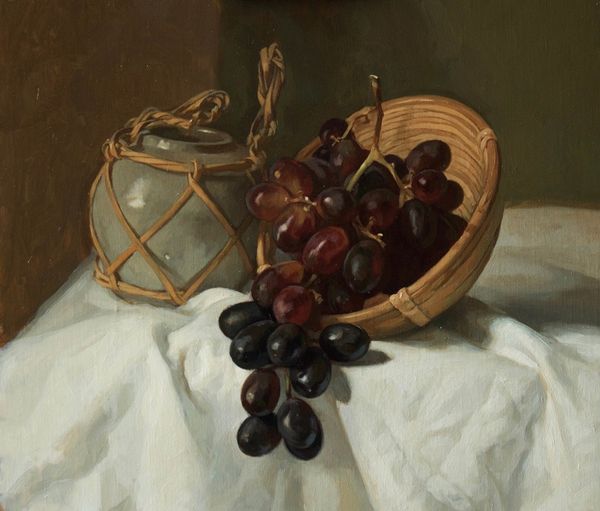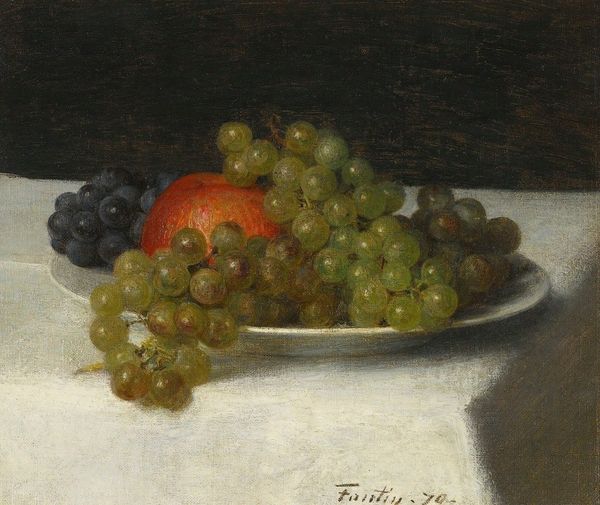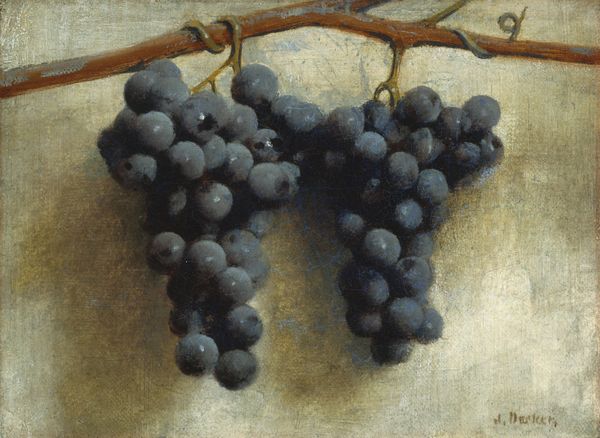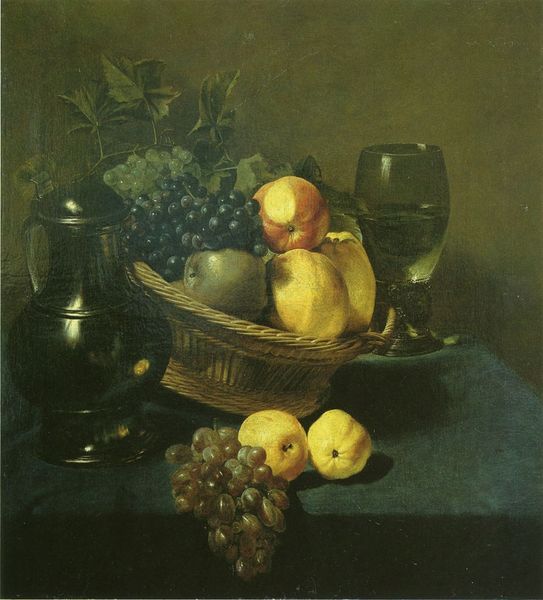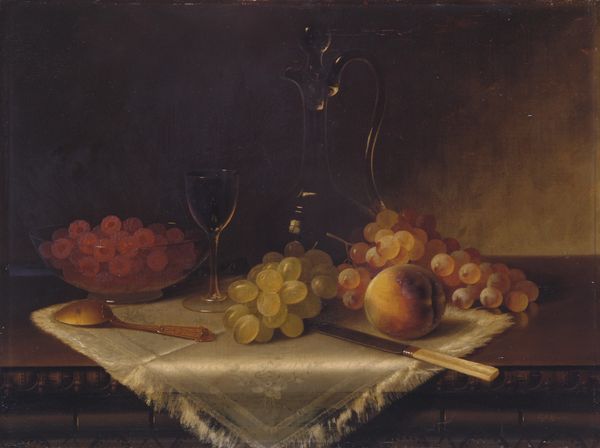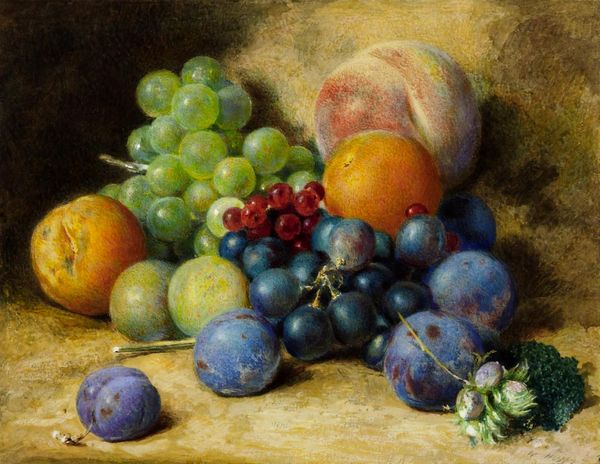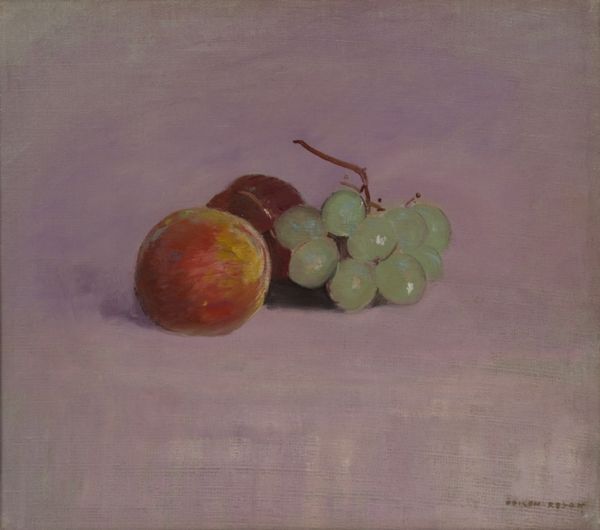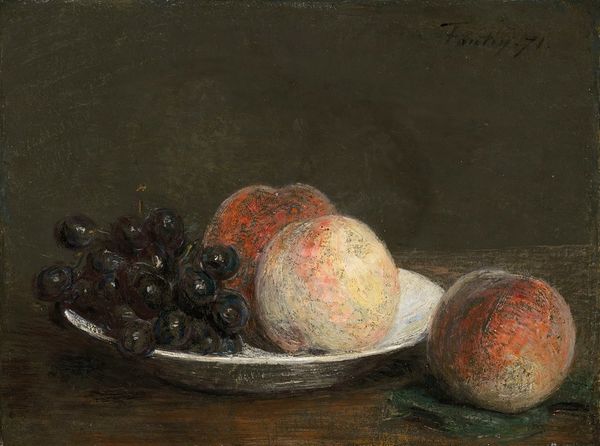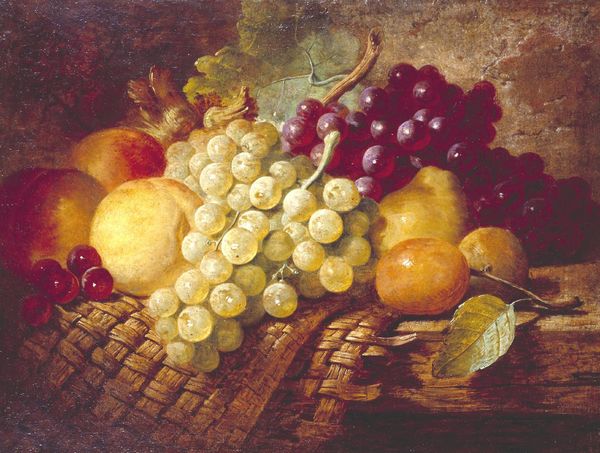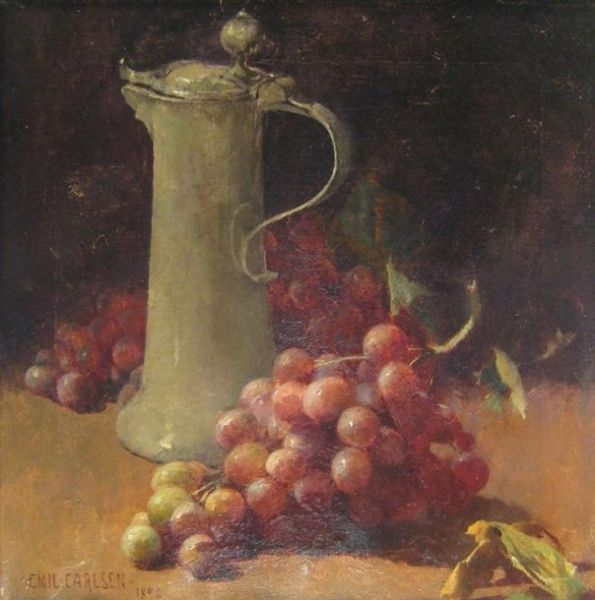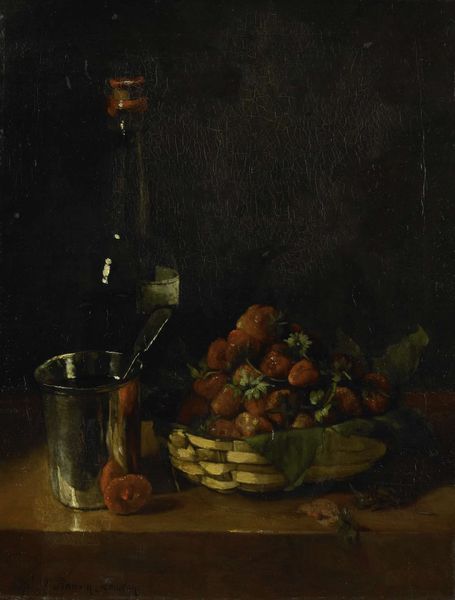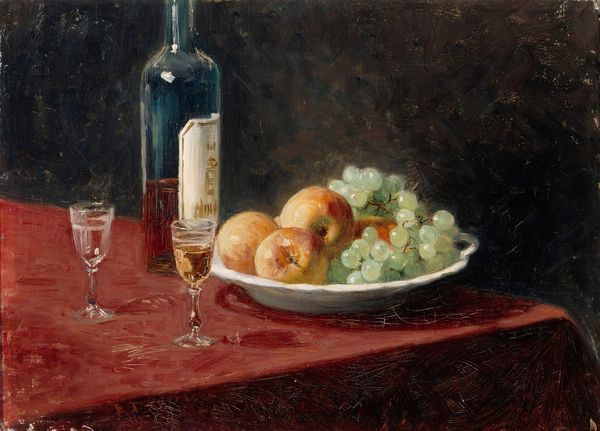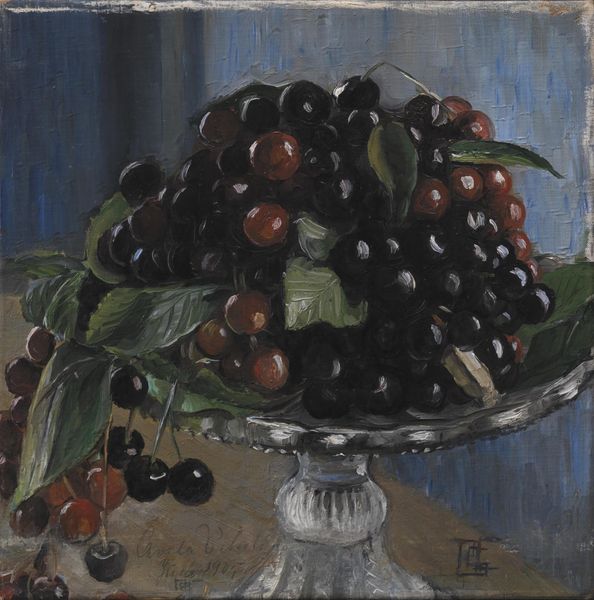
oil-paint
#
oil-paint
#
oil painting
#
genre-painting
#
realism
Copyright: Modern Artists: Artvee
Curator: This painting by Neale Worley, titled "Three Plums," employs oil paints to bring a genre scene vividly to life. It is, I believe, a classic example of realism. Editor: The muted tones give me an immediate feeling of warmth, even domesticity, while the arrangement feels consciously constructed to evoke a particular sense of... well, abundance perhaps, given the fruit. It strikes me as quite modest in scale. Curator: Modest indeed. It brings up some questions about representation: Whose table is this still life set upon? And how does its representation contribute to the narratives surrounding class and consumption? The careful arrangement can imply certain performative acts associated with middle-class values. Editor: Absolutely. And let's think about Worley's chosen medium – oil paint. Its qualities facilitate blending and layering that adds richness. It becomes apparent that a simple piece depicting mere fruit takes much skill and craft in choosing pigments that can realistically convey their textures and light as reflected onto the draped cloth. The oil's tactile nature heightens our appreciation, transforming everyday objects into compelling art. Curator: This resonates strongly with the historical use of realism in depicting domestic life. Examining this in the light of contemporary social theories, we find fascinating questions regarding gender and identity. Who were the intended viewers, and how does the art confirm and reinforce particular notions regarding who 'belongs' within such settings? Editor: And by elevating seemingly humble subject matter using classical techniques and high-quality materials, does the artwork critique or champion those "middle-class values"? Does the artist offer a way to resist hierarchical value systems in visual art? The inclusion of that intricately woven basket is so artfully done and forces us to consider its history as a container created with skill and labor. Curator: Precisely, it’s through exploring these visual intersections—the subjects, their mode of depiction, their probable audience, the painting’s own value—that we find layers that bring complex narratives surrounding ownership, privilege, and expectation. Editor: Thinking of art as physical labor and the result of skillful creation, beyond just conveying an illusionistic scene opens new pathways. Curator: This shifts the emphasis to production, opening crucial dialogues in cultural studies. Editor: Agreed. These objects represent not just what's on the canvas, but reveal an interplay between social meanings, materiality, and methods.
Comments
No comments
Be the first to comment and join the conversation on the ultimate creative platform.
